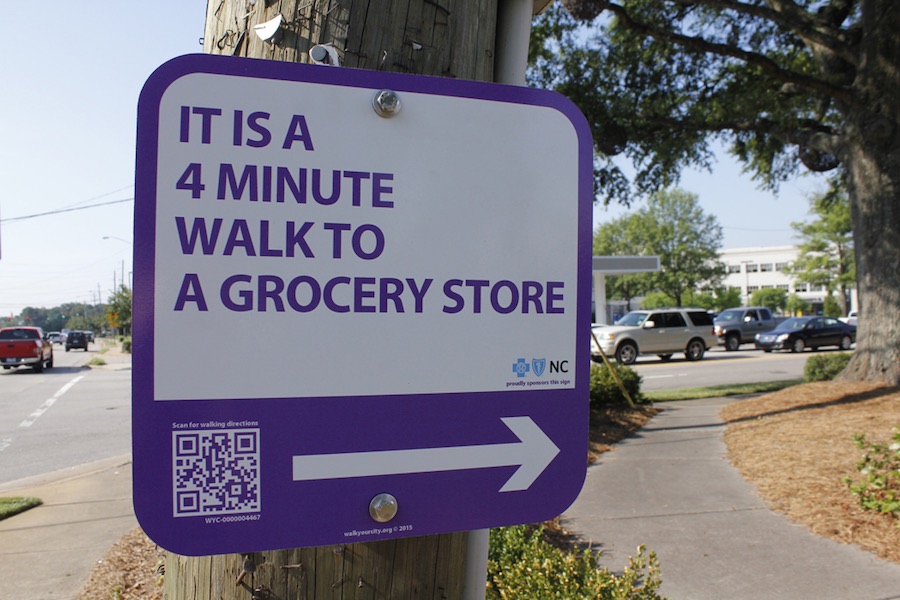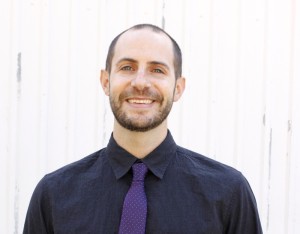Civic startup aims to get more people to walk and cities to invest in bike and pedestrian infrastructure.

A funny thing happened to Matt Tomasulo while studying architecture in Copenhagen. His interest shifted from Neo-Modernist structures and manor houses to the spaces between the city’s magnificent buildings. Tomasulo found himself drawn to the streets, sidewalks and bike paths leading to these places, which ultimately led him to create a civic startup company that helps cities get people walking. You could say he followed the signs.
“During my time there, I traveled all over without a car and was fascinated by that independence of mobility,” Tomasulo says. “It got me wondering, what was different about home? Why did people not utilise public space like in Copenhagen?”
He began to analyse the transportation choices people make and found himself trying to answer questions like why people in some cities walk and bike more than others? Could it be that those who continually choose to drive or ride on a bus have overestimated the time it takes to walk to their destination?
The Destination
Walk [Your City] provides communities with an online suite of tools that can be used to prototype informational street signs showing the distance, in minutes, to amenities on foot or by bike. The company also provides campaign management features, allowing users to analyze transportation data and pilot new types of projects in the built environment while increasing engagement around walkability.
From our partners:
Walk [Your City] is currently working with community leaders in cities like Lexington, Ky.; San Jose, Calif., and Durham, N.C., with one goal, getting “more feet on the street,” as Tomasulo likes to say. Among the largest projects, WYC has been involved with was the installment of 168 signs at 25 intersections in Grand Rapids, Mich., during an event called ArtPrize. The signs say things like, “It’s a 7-minute walk to the theater” or “It’s a 10-minute walk to the park.” Signs can also contain QR codes, allowing people to use their smartphones to quickly find maps and directions to destinations. Earlier this year, the John S. and James L. Knight Foundation pledged $182,000 to support WYC in further developing tool kits and campaigns to make communities more vibrant and walkable.
“In short, a walkable city is safer, more interesting, healthier, environmentally sustainable, supports retail and creates more economic development as a result,” says Matt Gladdek, director of Government Affairs at Downtown Durham Inc.
“Our primary goal is to get people out of their cars and walking between our great art galleries, bars, restaurants and shops. We know people on the streets encourages other people to walk, and it makes a city feel more alive and energetic.”
Downtown Durham Inc. teamed up with WYC and BlueCross BlueShield of North Carolina to implement a WYC campaign that currently includes 37 signs. The group is planning to survey residents to determine if more signs should be posted and where they should lead to.
From There to Here
After moving to Raleigh, N.C., to attend graduate school, Tomasulo began researching what kinds of things influence people’s transportation decisions. Walk [Your City] was born as an experiment designed to see if sharing information about travel time would get more people walking. In 2012, during Tomasulo’s final semester, signs were posted around Raleigh, and drew attention from media outlets like CityLab and BBC News.

“Due to the overwhelming interest in others replicating WalkRaleigh in their own community, I shifted my masters project to scaling WalkRaleigh as Walk [Your City],” Tomasulo says.
Tomasulo launched a Kickstarter campaign with the initial goal of raising $5,800 to help get Walk [Your City] off the ground and got that amount in just eight days. He ended up with $11,364 after a month of campaigning. The money allowed Tomasula to create a simple template system that other cities could use.
More Feet on the Street
Measuring the success of WYC campaigns is difficult. It would take a team of researchers watching to see if people read the signs then choose to walk to a destination rather than drive there. Tomasulo and leaders in communities that have partnered with WYC rely primarily on anecdotal evidence. Tomasulo says the ultimate marker of success would be seeking communities make long-term investments in bike and pedestrian infrastructure. He believes the WYC campaigns have helped change people’s perceptions about walking, and the signs have helped change people’s behavior. In a way, WYC allows cities to conduct their own test. The signs are easy to put up and easy to take down. Many cities working with WYC are exploring the idea of permanent signs but need to test the waters first.
“The fact the signs are currently temporary has allowed us to sidestep initial challenges because people are willing to give the signs a chance,” Gladdek says about the signs in Raleigh. “We hope it’s one piece of a larger and longer term campaign to make downtown Durham more walkable and less reliant on automobiles. The public has been supportive, and we hope we will have enough support to have a groundswell of support to make this permanent.”
The Target Market
When it comes to Tomasulo’s target market, he’s looking for cities that have developed a bike and pedestrian plan but may not have the resources for a full implementation. Walk [Your City] is designed to help communities activate underused corridors, connect adjacent districts, and highlight local gems, support and promote public health objectives and, as Tomasulo says, “dip a toe in the tactical urbanism pool.”
This feature originally appeared in Livability.













